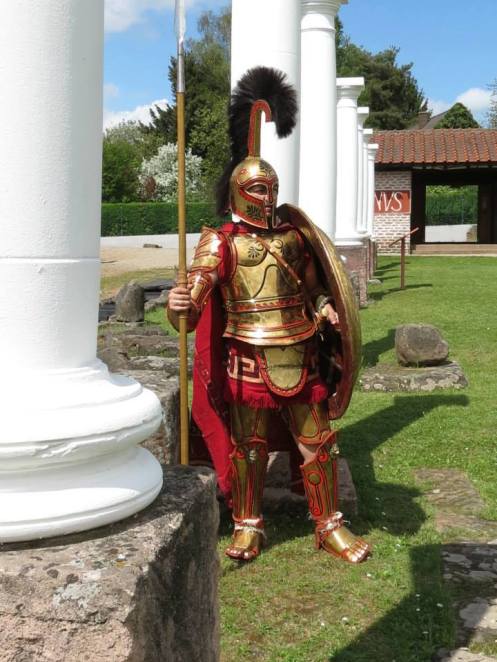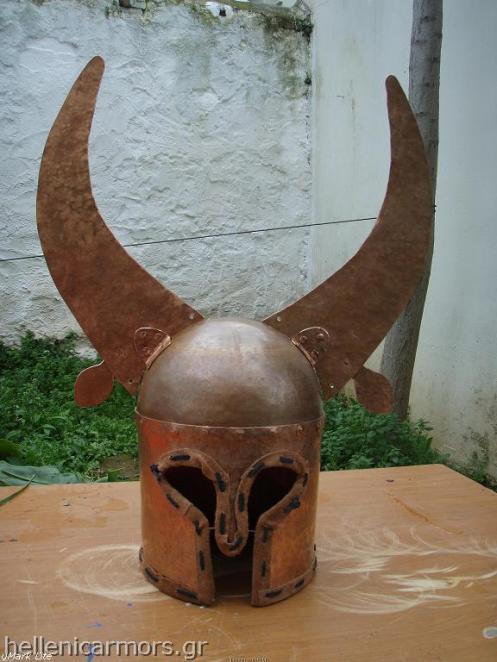The Early Archaic hoplite.

When we talk about hoplite warfare our mind goes to the ordered ranks of the phalanx formation and combined effort of the fighters to overpower their enemies. Scholars believe that is safe to say that phalanx style fighting had started around 700 B.C. But what happened before? How did the men who founded the Greek colonies and conquered the Mediterranean Sea fought against their enemies? The excavations in Olympia and various items of Early Archaic Greek pottery gave us a wealth of information. A careful study of the Homeric Epics is giving us an insight about the battle tactics of the Era.
The collapse of the Palace Societies had also the effect of military decline. The way was opened for a chaotic type of battle, where the well trained heavily armored aristocrats dominated. The word hoplite means men at arms and only men of good financial standing could afford adequate combat gear. The panoply of the time was covering the warrior from head to toe. It is safe to assume that, only aristocrats and their closest relatives or their picked bodyguards could have afforded that kind of equipment. The armor was not only a means of protection but also a way of displaying the warrior’s noble status.

Modern reconstruction of an Early Archaic Hoplite. Courtesy of the living history Association «Hetairoi»
The heavily armored hoplites would make a grandiose almost theatrical appearance on the battlefield with richer ones riding on their chariots. Its hardly surprising given their heavy armor who made them look like the much later appearing medieval knights. They first boasted about their linage and then challenged their counterparts in the enemy lines. They made extensive use of javelins or even stones if we trust Epic Poetry. Then they closed in and fought with swords.
The nearly catafract aristocrats, after neutralizing the best enemy fighters, led their followers in the obliteration of the less well armed and trained enemy units who had not the equipment nor the training to stand up to them as they were mostly peasants with rudimentary weapon skills.

Reconstruction of the Geneva exibit by «Hellenicarmors.gr»
But by the time of Homer, the deep formation that checked effectively the onslaught of the enemy elite fighters reappeared. (*). The time of the super heavy armored hoplite who excelled in individual combat had come to an end.
Archaic Hoplite reconstructed by «Hetairoi»
If you want to know how to re-enact ancient Greek warriors please click here
* Homer ILIAD 22 131-133, 145-150
Sources:
Connolly Peter, Greece and Rome at War , Greenhill Books, London, 1988
Hackett, John (1989), Warfare in the Ancient World
Montagu, John D. Battles of the Greek and Roman Worlds, Greenhill Books, 2000.
Campbell, David A. Greek Lyric, Sappho and Alcaeus. Loeb Classical Library. Cambridge MA: Harvard University Press, London: Heinemann 1982.
Katsikis Dimitris, The Hoplite Phalanx in the Battle. Techniques and Tactics under new revision- Η Οπλιτική Φάλαγγα στην μάxη Τεxνικές και Τακτικές uπο νέα θεώρηση, Army and Tactics Magazine- Πεpιοδικό Στpατοί και Τακτικέs, vol 11, February 2011
Jonathan M. Hall A history of the archaic Greek world, ca. 1200-479 BCE Blackwell publishing 2007
Harvey Alan Shapiro The Cambridge companion to archaic Greece Cambridge University Press

video link broken. You might also enjoy reading Battle of Marathon, by Peter Krentz goes into some detail regarding shield, armour, sword and the construction of and weight of these items. With a really good assessment of tactics used etc.
Thank you. Link fixed.
The only thing I dissagre with Mr Krenz is the runnning charge.
Please see my article Archers vs Phzallanx as to why.
Kind regards